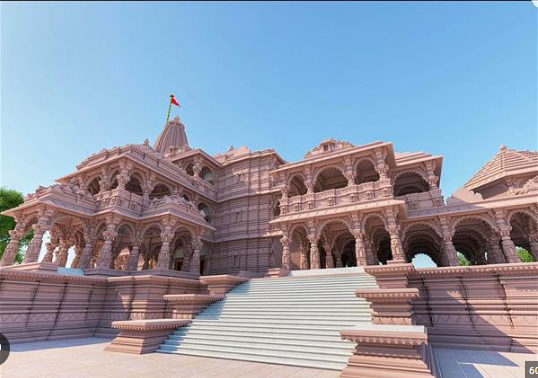Ayodhya, the ancient city that resonates with the echoes of Hindu mythology, has been a crucible of faith and identity for centuries. At the heart of this city lies the Ayodhya Ram Mandir, a sacred edifice that stands as a testament to the enduring spirit of unity and faith that binds the diverse tapestry of India.
Historical Odyssey of Ayodhya
To comprehend the significance of the Ayodhya Ram Mandir, one must embark on a historical odyssey that traverses epochs and civilizations. Ayodhya, believed to be the birthplace of Lord Rama, has been a revered pilgrimage site for Hindus since time immemorial. The city’s history is interwoven with the ebb and flow of different empires, each leaving its imprint on the sacred soil.
The Ram Janmabhoomi Movement
The construction of the Ayodhya Ram Mandir is deeply entwined with the Ram Janmabhoomi Movement, a socio-political movement that unfolded in the late 20th century. The movement sought to reclaim the alleged birthplace of Lord Rama, believed to have been the site of an ancient temple demolished during the Mughal era. After years of legal battles and societal discourse, the Supreme Court of India, in 2019, paved the way for the construction of the Ram Mandir.
Subheading 4: Symbol of Unity
The Ayodhya Ram Mandir stands not only as a physical structure but as a symbol of unity that transcends religious and cultural boundaries. The construction of the temple has brought together people from various walks of life, fostering a sense of harmony and shared identity. It symbolizes the coexistence of diverse beliefs under the overarching umbrella of a shared cultural heritage.
Architectural Splendor and Spiritual Magnificence
The architectural grandeur of the Ram Mandir is a tribute to India’s rich heritage and craftsmanship. The temple’s design seamlessly blends traditional and contemporary elements, reflecting the timeless nature of the Ramayana. Intricate carvings, majestic domes, and towering spires create an ambiance of spiritual magnificence, inviting devotees and admirers alike to immerse themselves in the divine aura.
Faith as a Unifying Force
Faith has been a binding force in the construction of the Ayodhya Ram Mandir. The devotion and determination of millions of believers, spanning generations, have culminated in the realization of this sacred abode. The temple exemplifies the power of faith to overcome obstacles, fostering a sense of collective purpose and shared destiny.
Commemorating Cultural Continuity
Beyond its religious significance, the Ayodhya Ram Mandir serves as a beacon of cultural continuity. It encapsulates the enduring values and narratives that have shaped the Indian ethos for millennia. The temple’s construction marks a celebration of cultural resilience, reaffirming the continuity of traditions that have withstood the test of time.
Ayodhya Ram Mandir
In conclusion, the Ayodhya Ram Mandir emerges not merely as a physical structure but as an emblem of India’s soul. It symbolizes unity, faith, and the shared cultural heritage that unites a diverse nation. As devotees from different corners of the country converge to pay homage, the Ram Mandir stands tall, echoing the timeless words of Lord Rama and inspiring a collective journey towards a harmonious and inclusive future.







